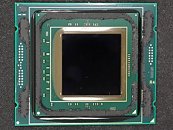
Intel Xeon W9-3595X Spotted with 60 Cores, 112 MB of L3 Cache, and 4.60 GHz Frequency
Intel's upcoming high-end desktop (HEDT) processor lineup for enthusiasts and prosumers is around the corner, and today, we managed to see the flagship SKU - the Xeon W9-3595X. Spotted recently on Geekbench benchmarks, this new chip packs a whopping 60 cores and 120 threads, making it Intel's highest core count HEDT offering yet. The Xeon W9-3595X is based on Intel's advanced Sapphire Rapids architecture, built using the Intel 7 process node. It succeeds the previous flagship 56-core W9-3495X, with four additional cores crammed into the new 350 Watt TDP envelope. Clock speeds have taken a slight hit to accommodate the extra cores, with the maximum turbo frequency lowered from 4.8 GHz on the 3495X to 4.6 GHz on the new 3595X.
However, with more cores, the 3595X should still offer a significant multi-threaded performance uplift for heavily parallel workloads. The Xeon W9-3595X will drop into existing LGA-4677 motherboards, like the ASUS PRO WS 790-ACE, after a BIOS update. It features 112 MB of L3 cache, 120 MB of L2 cache (2 MB per core), and continues Intel's push towards higher core counts for enthusiasts, content creators, and workstation users who need maximum multi-threaded horsepower. Pricing and availability details remain unannounced as of now. But with an appearance on public databases, an official launch of the 60-core HEDT juggernaut seems imminent. These new Sapphire Rapids SKUs will likely have extra AI features, like dedicated AI acceleration engines, in the same manner that server-class SKUs do.
However, with more cores, the 3595X should still offer a significant multi-threaded performance uplift for heavily parallel workloads. The Xeon W9-3595X will drop into existing LGA-4677 motherboards, like the ASUS PRO WS 790-ACE, after a BIOS update. It features 112 MB of L3 cache, 120 MB of L2 cache (2 MB per core), and continues Intel's push towards higher core counts for enthusiasts, content creators, and workstation users who need maximum multi-threaded horsepower. Pricing and availability details remain unannounced as of now. But with an appearance on public databases, an official launch of the 60-core HEDT juggernaut seems imminent. These new Sapphire Rapids SKUs will likely have extra AI features, like dedicated AI acceleration engines, in the same manner that server-class SKUs do.




